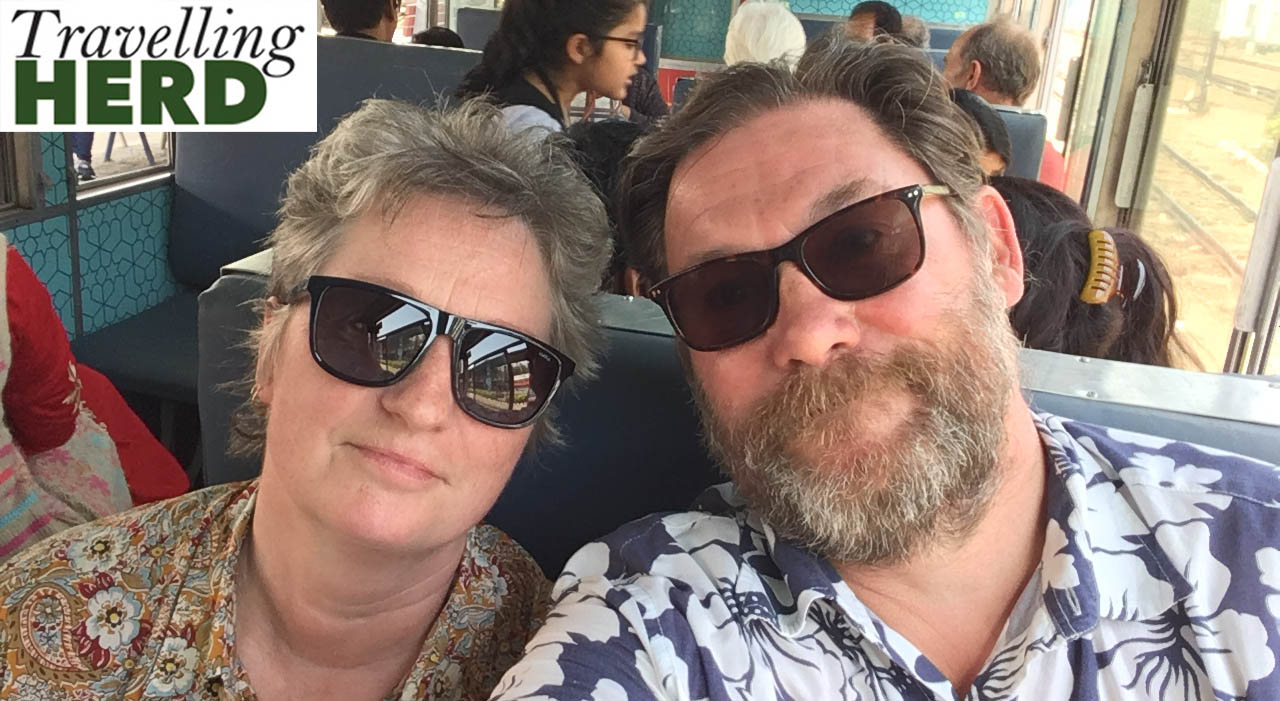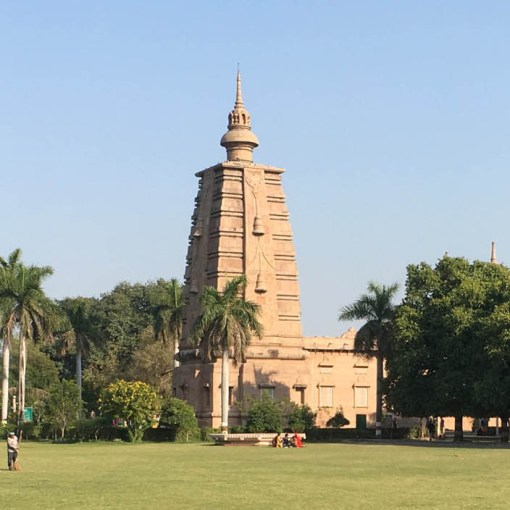Friday 29th March 2019
We had arranged a car to take us to New Delhi Station but the rush hour traffic was so bad we could not get close and in the end we got out and walked the last 200 meters.
As we waited on the platform for the train to Kalka we were joined by two English ladies who were also travelling on to Shimla via Kalka and who, perhaps sensing Robert’s burgeoning Tour Manager skills or perhaps simply attracted by his Hawaiian shirt, thought we would provide a buffer between them and the many people who kept trying to accost and “help” them in the station.
For this leg of our journey, we travelled executive class [EC] from New Delhi to Kalka which proved to be a very civilised experience. However, Indian Railways seemed incapable of booking groups or couples travelling together in adjacent seats but after some trading of places with others in the carriage, everyone seemed happy.

The catering is provided by Meals on Wheels who we have experienced before and we were offered complementary water, tea/coffee and biscuits followed by breakfast. In an interesting local variation, although we had not ordered this ourselves, the cornflakes were served with warm milk. The trays on which the drinks and food are placed have a printed sheet which gives the various catering options and asks travellers not to tip the staff. One member of Meals on Wheels team did offer Robert a tip however, as when he declined some biscuits to go with his second coffee, the Meals on Wheels representative pointed towards Robert’s stomach and politely commented, “You’re full, sir”.
There was a mass exodus from the train at Chandigarh, the stop before Kalka, leaving just a handful of passengers left to travel to the end of the line and those remaining were almost entirely western tourists.
We noticed that the Meals on Wheels staff were very keen to help with suitcases and parcels and it transpired that tips are perfectly acceptable, even demanded, for luggage-related services.
Although running slightly behind schedule early on in the journey we made up time and arrived on time at Kalka to walk across to platform 5 to catch our connection to Shimla.
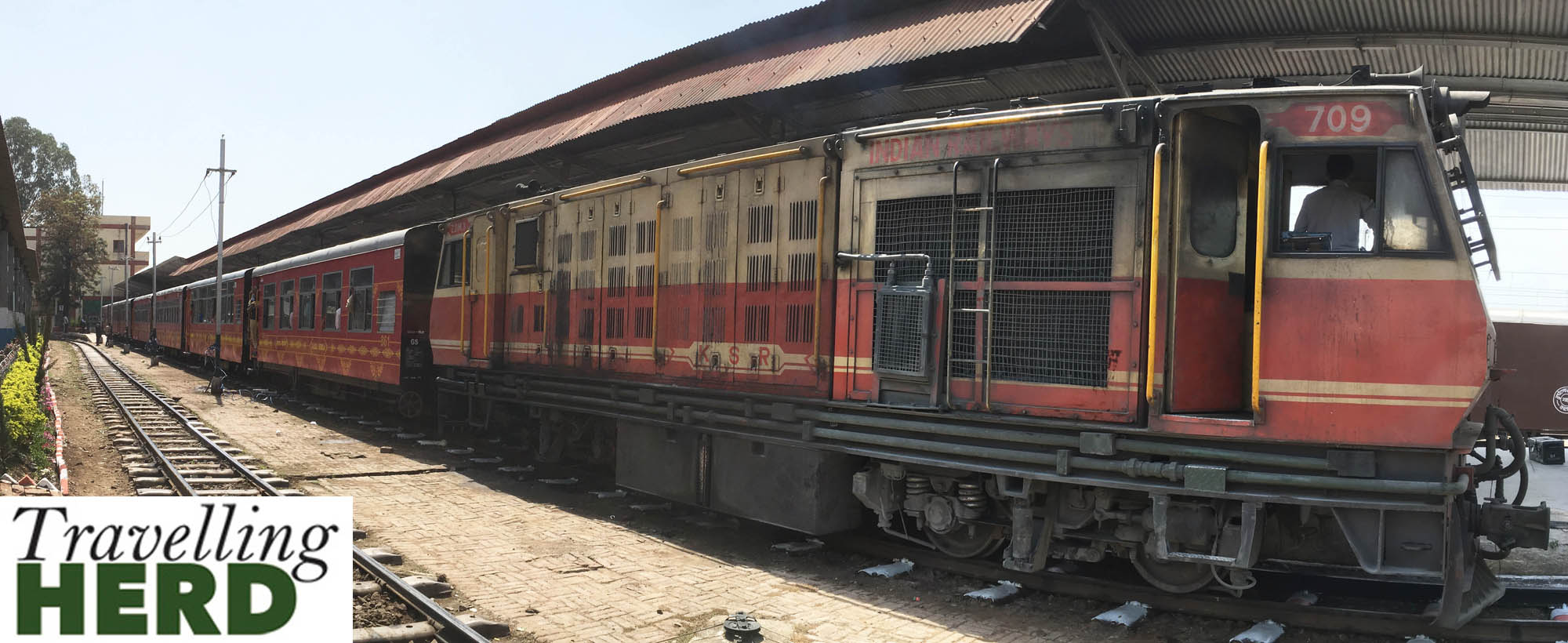
This is our second narrow gauge train of the trip and is one of the real reasons Robert planned this journey. The diesel engines are larger and more powerful than those used on the Darjeeling Himalayan Railway [DHR] and the carriages are more modern. The journey itself is also much more restful as, unlike the DHR, the track does not cross the road and so the horn rarely sounds. The ride is both faster and smoother.
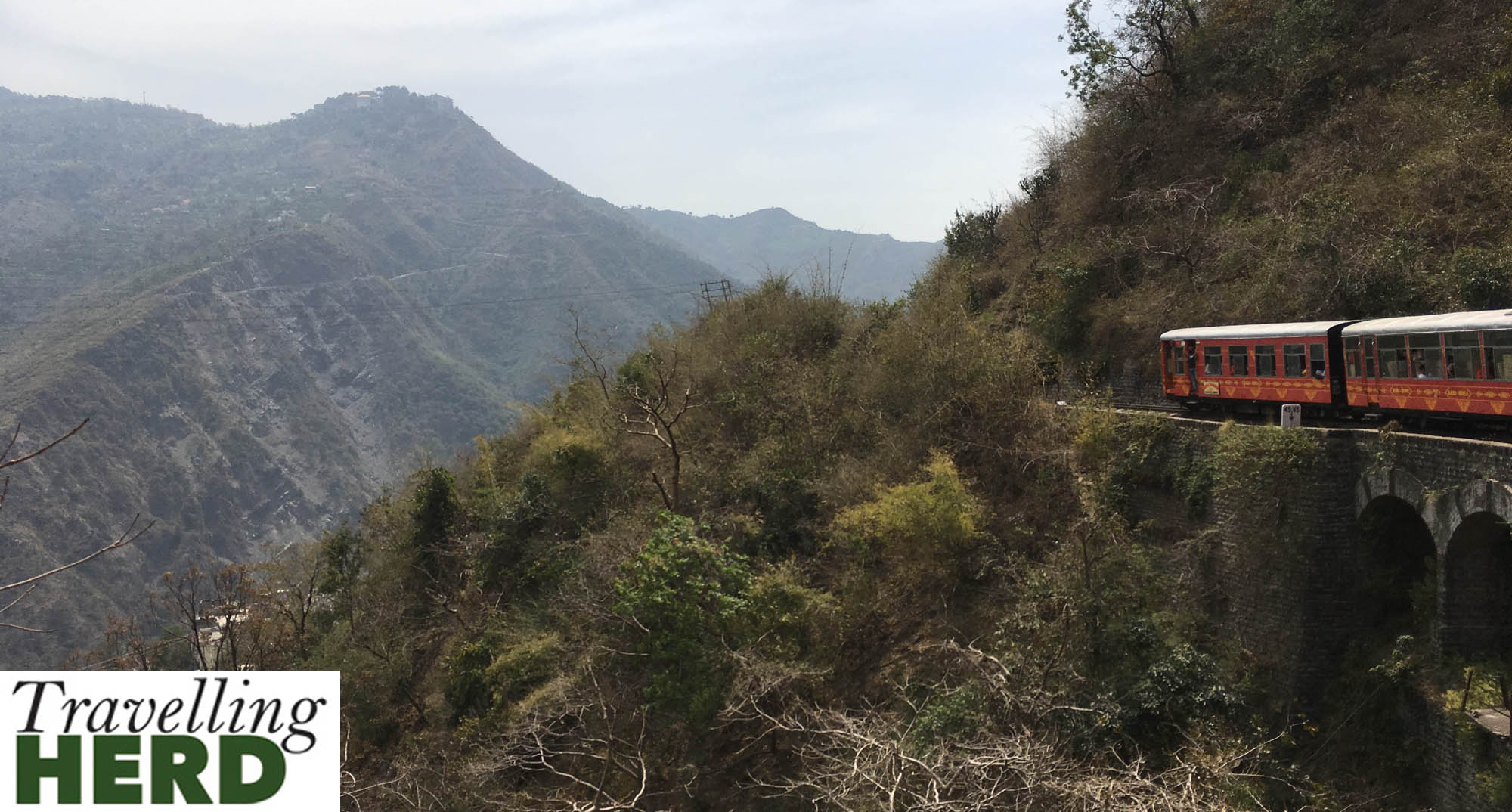
Again, Indian Railways seemed to struggle to seat groups together and we swapped with an elderly couple so that a family could sit in a group. Unbeknownst to us, this meant we were on the better side of the carriage for views, but as at one point the whole family were asleep through some of the more spectacular scenery we did not feel too guilty.
The train stops regularly at stations where snacks and drinks are available and as the train travels up the mountain, the packets of crisps become increasingly inflated due to the decrease in air pressure. People often jump on through open doors as the train is picking up speed and leaving.
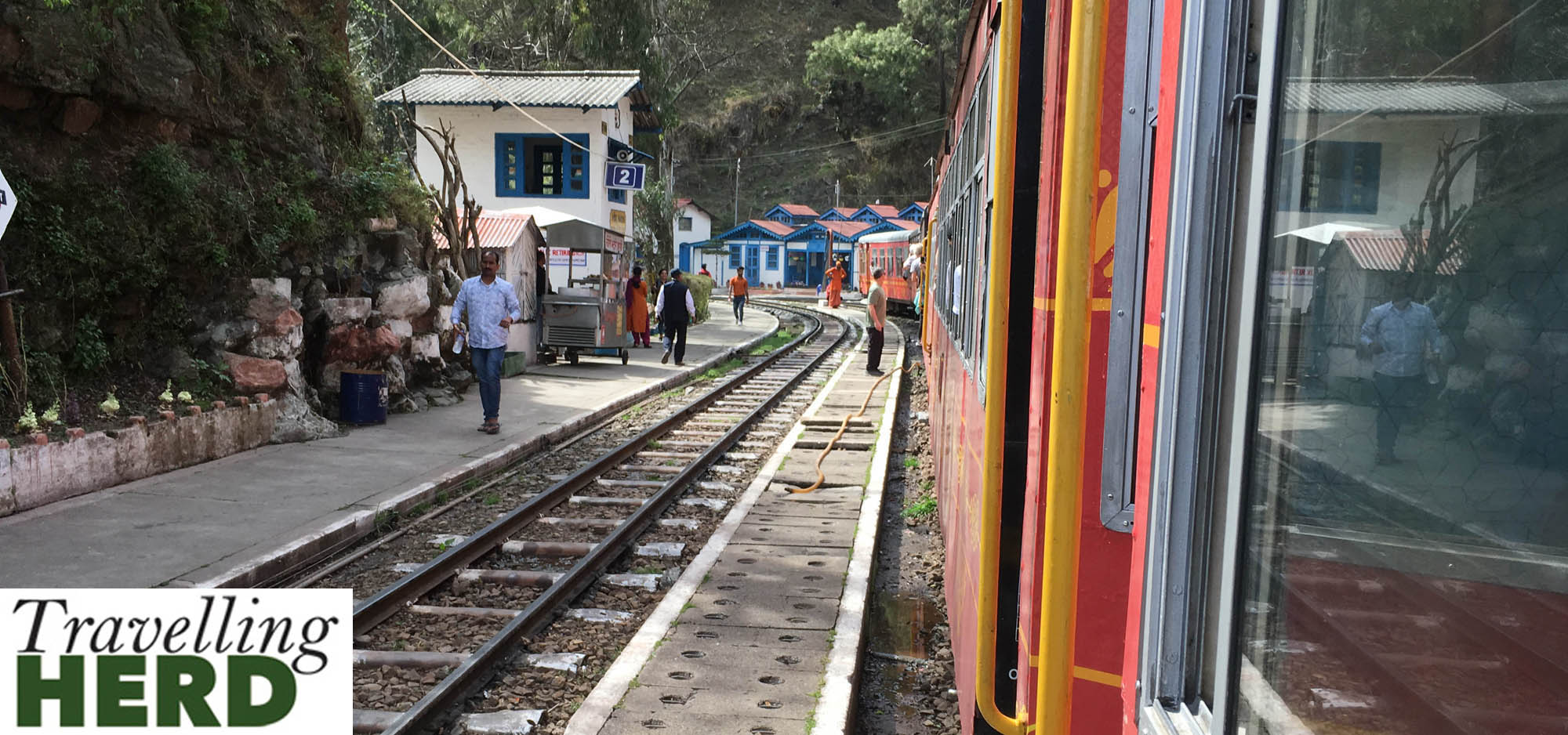
In some places the mountainsides have been impressively farmed with step agriculture.
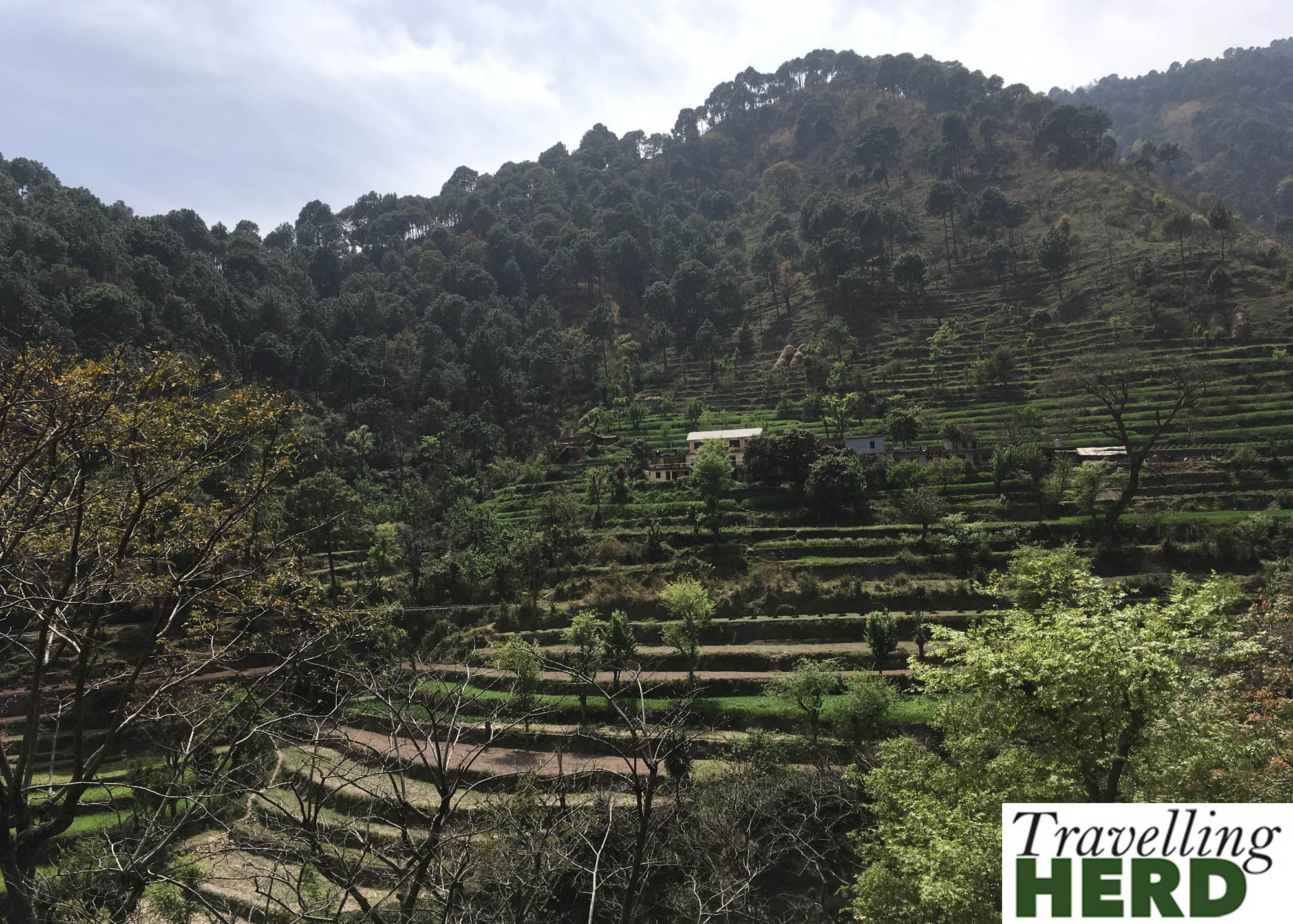
As you approach Shimla you can see it nestling on the steep hills. You have to hand it to the Victorians: they did not shy away from an engineering challenge but we did wonder during the five hour journey up to Shimla whether they could not have found an equally suitable site for their summer capital on slightly lower, less challenging terrain.
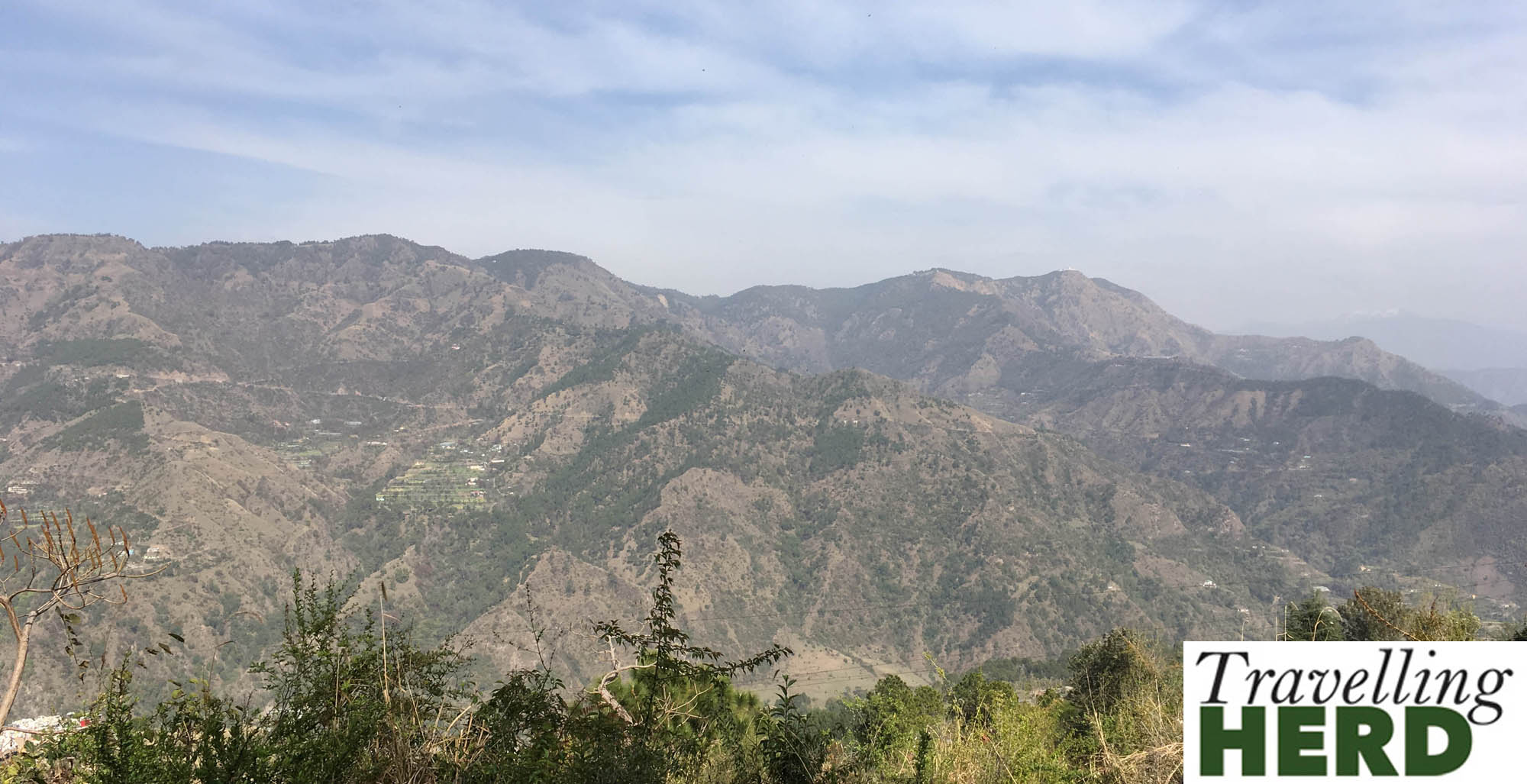
There has obviously been a lot of money invested in Shimla Station as the railway is a UNESCO World Heritage Site and the station is new and clean and the toilet facilities looked impressively hygienic and welcoming to Matilda’s western eyes.
They do, however, need to rethink their taxi queuing system. There are ranks and ranks of taxis parked by the station and there seems to be a “taxi tzar” who hands out the work but there is no system to ensure that the drivers accepting the jobs have cars which are parked near the front of the queue to exit the station area.
The Combermere Hotel is an eight storey building with views across the city and it has several lifts in various parts of the hotel, linking the different levels but not all lifts go to all levels. Matilda in particular is struggling to get her bearings and find the right lift.
However the bar with an unimpeded view of the sunset and a screen showing the IPL cricket game proved to be a perfect spot to relax in after a whole day spent travelling. Matilda did feel slightly sorry for the singer who was standing in front of the screen to perform when the majority of people in the bar, including staff, were more focused on the cricket match playing out behind him.
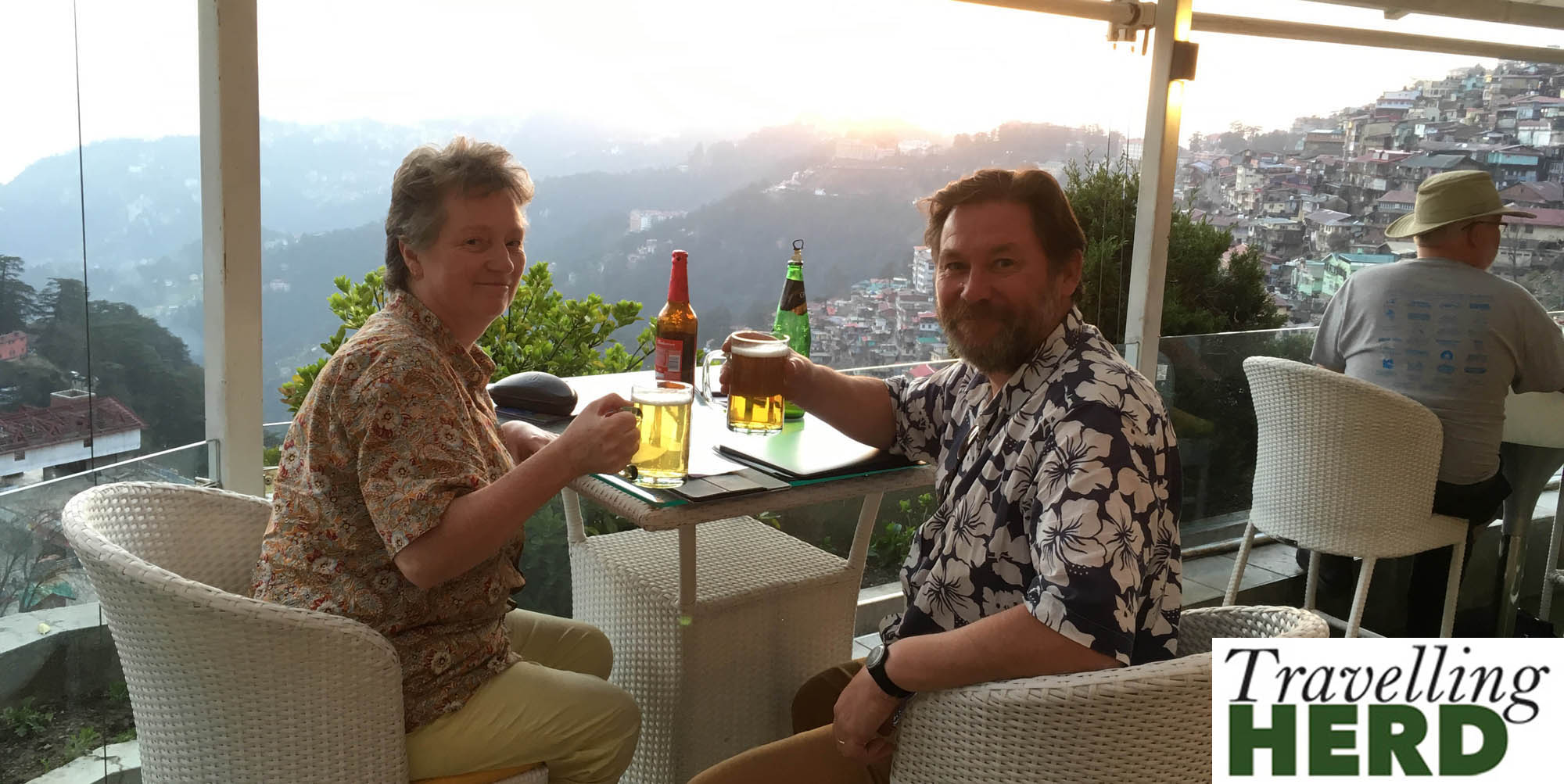
The bar serves the stronger eight per cent beer so after a few mouthfuls, Robert asked for some lemonade to go with it. Initially the barman started to poor it into a separate glass and when Robert explained he wanted to mix it with his beer, the barman explained that, “We call this a shandy sir”, much to our amusement. In a like-minded spirit of education, Robert explained that shandy should be mixed half and half but when only a small amount of lemonade is added, “We call this ‘a top'”.
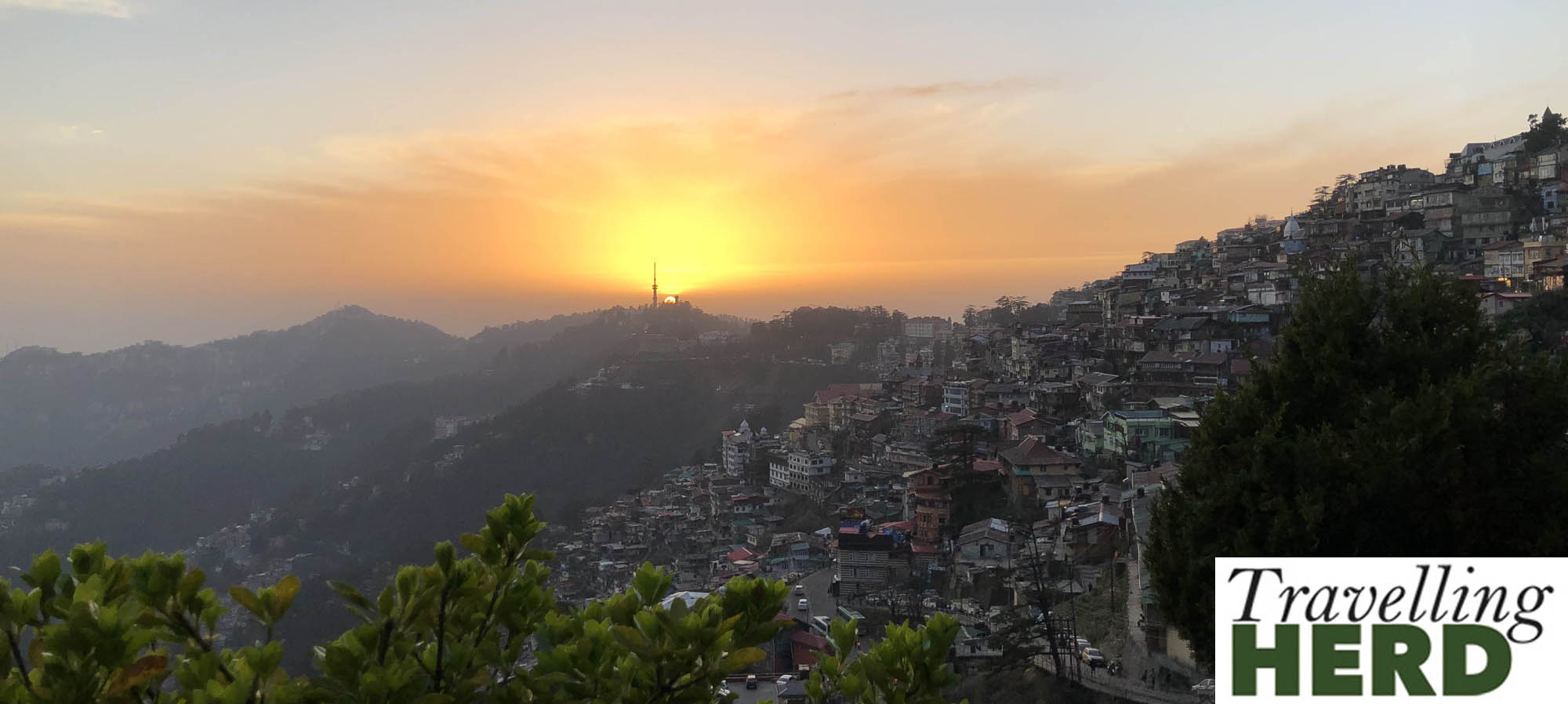
Video of the day:
Current Route Map:
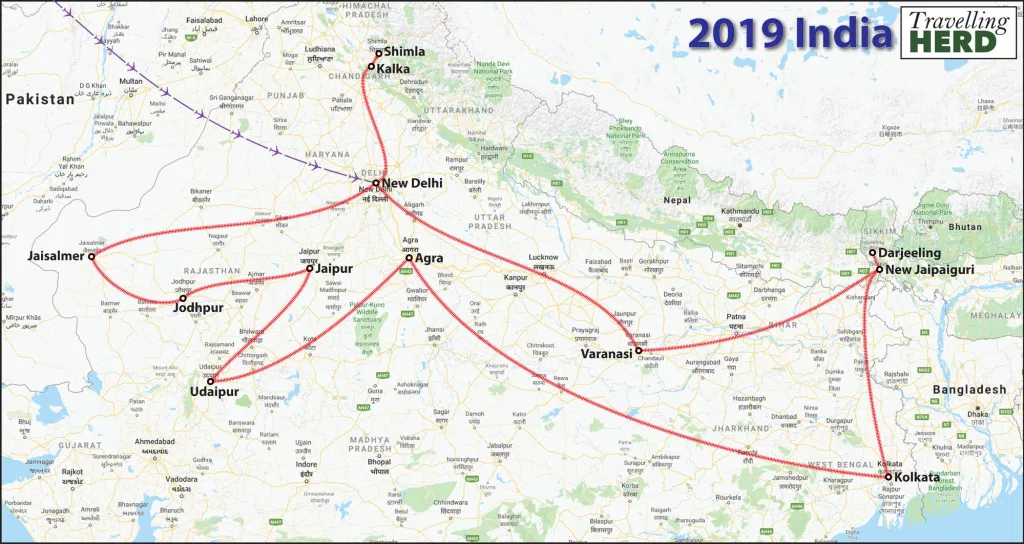
Distance travelled so far:
By Air to Delhi: 4,187miles
By 15 trains to Shimla: 4,155miles
Selfie of the day:
